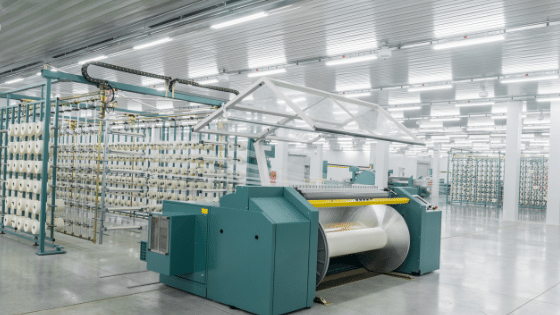304/304L stainless steel plate is one of the most popular stainless grades and Kloeckner Metals is proud to stock it nationwide across our network of 40+ branches.

304/304L stainless steel plate is one of the most versatile and widely used stainless grades. Due to its lower carbon content and higher chromium composition, this grade is among the best in its class for strength, corrosion resistance, and formability. It is frequently utilized in pharmaceutical and chemical processing equipment, kitchen equipment. In applications where corrosion resistance and welding are required, the ultra low variant 304L is better suited.
This stainless steel grade is among the most common stainless steel grades, in part because it is so versatile and easy to fabricate. It shows good ductility in the annealed condition, and can be readily drawn and formed for complex shapes. High hardness and strength can be achieved through cold working. This grade demonstrates excellent corrosion resistance and will withstand rural and industrial atmospheric exposure, and weldments are less susceptible to intergranular fractures. One disadvantage is that 304 is non-hardenable by heat treatment.
This steel grade is used in the food service, textile, chemical processing, petroleum, pharmaceutical, and architecture industries.
304 stainless is often seen in kitchen equipment, chemical processing equipment, and architectural trim. 304L provides outstanding corrosion resistance and produces better weldments.
It is machinable.
It is weldable. However, austenitic stainless steels tend to be at greater risk for cracking at weld joints and sensitization on mechanical properties. Welding with common fusion and resistance methods are recommended for best results, or choosing 304L over 304 when welding is necessary.
It is not heat treatable.
This stainless steel grade is among the most common stainless steel grades, in part because it is so versatile and easy to fabricate. It shows good ductility in the annealed condition, and can be readily drawn and formed for complex shapes. High hardness and strength can be achieved through cold working. This grade demonstrates excellent corrosion resistance and will withstand rural and industrial atmospheric exposure, and weldments are less susceptible to intergranular fractures. One disadvantage is that 304 is non-hardenable by heat treatment.
This steel grade is used in the food service, textile, chemical processing, petroleum, pharmaceutical, and architecture industries.
304 stainless is often seen in kitchen equipment, chemical processing equipment, and architectural trim. 304L provides outstanding corrosion resistance and produces better weldments.
It is machinable.
It is weldable. However, austenitic stainless steels tend to be at greater risk for cracking at weld joints and sensitization on mechanical properties. Welding with common fusion and resistance methods are recommended for best results, or choosing 304L over 304 when welding is necessary.
It is not heat treatable.
ANSWER:
304L is the ultra low carbon variant of 304 stainless. Lower carbon content is the only chemical difference between these two grades, leading 304L to perform better in corrosive environments and be easier to weld.
ANSWER:
The lower carbon content in 304L eliminates chromium carbide precipitation caused during welding, putting 304L at lower risk for intergranular corrosion even in highly corrosive environments.
ANSWER:
The fatigue strength for 304 stainless is 241 MPa (35 ksi).
ANSWER:
304L is the ultra low carbon variant of 304 stainless. Lower carbon content is the only chemical difference between these two grades, leading 304L to perform better in corrosive environments and be easier to weld.
ANSWER:
The lower carbon content in 304L eliminates chromium carbide precipitation caused during welding, putting 304L at lower risk for intergranular corrosion even in highly corrosive environments.
ANSWER:
The fatigue strength for 304 stainless is 241 MPa (35 ksi).
Kloeckner’s metal roofing manufacturing showcases the flexibility,...
Steel base plates are fundamental elements employed in various manufacturing processes. These flat, rectangular...
Metal fabrication is a critical process that transforms raw metal materials into finished products....
The solar industry has undergone a significant transformation by incorporating steel products into various...
The unprecedented pace of solar growth is challenging and reforming America’s construction and engineering...
If you’ve got a roof over your head, it’s partly thanks to purlins. A...
Acquiring highly profitable company with annual sales of around USD 30 million Significant expansion...
A stainless steel depot is a specialized facility or supplier that stocks and provides...
American manufacturers use about 28.2 billion pounds of aluminum every year, 41.6% of it...
Leading steel distributor expands commitment to sustainability in the North American market. Kloeckner Metals,...
At Kloeckner, we are excited to announce that our Santa Fe Springs, CA location...

X
The Kloeckner Metals website uses modern technologies. Unfortunately, your browser doesn't support those technologies.
Download the latest version of one of these browsers to experience the site: